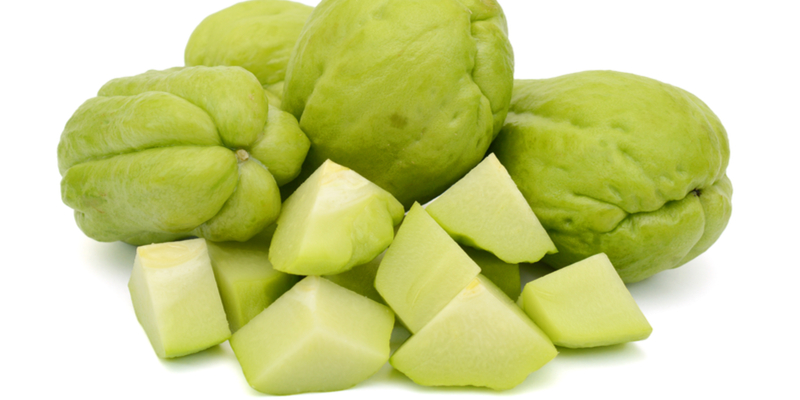Spotlight on Choko
Choko, also known as Chayote, are little vine veggies that many people forget about and shouldn’t – it’s not only really good for you but delicious too! In this post, we shine a spotlight on Choko and tell all you need to know to make it your favourite new vegetable.
Intro Profile
They belong to the cucurbit family along with pumpkins, gourds and zucchini. They have a tough green skin, characterised by deep creases. The single nutty tasting seed it edible but is not often used in cooking. Choko are popular in asian cuisine. They are also colloquially called Vegetable Pears or Mango Squash. They have a very mild flavour, often compared to marrow, so they are usually cooking with stronger tasting foods.
Origin Story
Originally from Central America, they were taken to Europe by Spanish explorers and from there they were introduced to parts of Asia.
Healthy Snapshot
- Energy: The Manganese and Vitamin B6, found in choko, help the body to produce energy by converting protein and fat.
- Prevents constipation: Choko contain dietary fiber that prevents constipation and irritable bowel syndrome. Fiber soften the stools by drawing water into them & making them smooth.
- Heart matter: Choko is rich in folate, magnesium and potassium. Folate decreases the homocysteine levels in the blood and thereby reduces the risk of coronary heart disease and stroke. Magnesium prevents blood clots from forming and maintains a normal heartbeat, increases good cholesterol levels. Potassium decreases high blood pressure and the risk of stroke.
Selection & Storage
- Choose the smallest shiny young choko without any brown spots. If they’re all large, the ones with softest spines are the most tender.
- Usually they need to be peeled (especially bigger ones).
- Choko keep well in the fridge but if stored too long can start sprouting from the seed and it becomes stringy.
- When cut, they exude a slippery sap that is hard to wash off your hands and can cause itchiness, so use rubber gloves to peel them or cut off each end and immerse in cold water for a few minute before peeling.
Foodie Musts
- Before getting into the more fancy recipes, try the most simple way to serve where you can truly respect and appreciate the soft texture of choko. Steam wedges served with just a knob of butter and cracked pepper; or boiled choko with a pinch of sugar to bring out it’s natural sweetness.
- Choko can be roasted, fried, pickled, steamed or mashed and goes great with spicy ingredients.
- Choko halves can be stuffed, diced, cooked and served with a sauce, stir fried and added to braises or stews. They can be used in fruit and vegetable salads, or be picked and used a base for relishes.
- Click here for some delicious choko recipes.
